Water and the Origin of Life
Abstract
:1. Introduction
2. Water and Life in Greek Philosophy
2.1. Empirical Approach: The Six Elements
2.2. Dogmatic Approach: Matter, Emptiness, and Movement
2.3. Skeptical and Causal Approaches
3. Life Versus Inert Matter
3.1. There Are No Supernatural Beings
- The pre-Socratic Empiricist movement, based on the theory of the four elements (Earth/Water/Air/Fire) and beginning with Thales and Xenophanes. This trend was taken up, in part, by post-Socratic Aristotelian realism.
- Pre-Socratic esotericism (Tetrahedron, Octahedron, Cube, Icosahedron, and Dodecahedron). This trend begins with Pythagoras and continues with Socrates towards Platonic idealism (ideas) or towards Aristotelian realism (duality of matter and form), where emptiness is deprivation.
- The pre-Socratic Rationalist movement, which denies movement and, therefore, emptiness, since, without emptiness, there can be no movement. This trend derives from the ideas of Parmenides. It culminates in the idea that Being can only be limitless and, therefore, infinite.
- The pre-Socratic constructivist trend, which puts the human being at the center of the game. This trend asserts that there can be no absolute truth, since the human being is the measure of all things. This gave rise to post-Socratic skepticism, in which observation is all that counts. Since the void cannot be observed, it does not exist.
- The post-Socratic Atomist movement, which takes up the starting point of rationalism. But here, instead of denying the existence of motion, since it is clearly observable, we deduce that the void must also exist. Hence, atoms of matter move in a non-material vacuum.
3.2. Air Always Contains Water
3.3. Earth Is Always Hydrated
3.4. Morphogenic Water
3.5. Molar Composition of a Living Being
4. Chinese Philosophy and the Tao
4.1. Chinese Culture Versus Western Culture
4.2. Tao (1), Dynamic Yin/Yang Duality (2), and He Harmony (3)
4.3. Invisibility (n ≤ 3) and Visibility (n ≥ 4)
4.4. The Five Chinese Elements (Wu-Xing)
4.5. Higher Levels (n > 5)
- The military man, Zhon LiQuin, leader of the group, who uses his fan to resurrect dead people.
- The woman, He XiangGu, holding in her hand a lotus that represents spiritual fulfillment and watches over the family’s health.
- The vigilante, Lü DongBing, an alchemist who, with his sword, symbolizes moral rectitude combined with knowledge and wisdom. He is the patron saint of poets.
- The beggar, Lan CaiHe, holding a basket of flowers, symbolizing happiness and longevity. He is the patron saint of gardeners.
- The scholar, Han XiangZi, writer and civil servant, always carries a flute. He is, therefore, the patron saint of musicians.
- The ugly, shaggy, bedraggled cripple, Tie GuaiLi. He holds a gourd, symbol of immortality, filled with the elixir of long life. He is the patron saint of the sick.
- The old man, Zhang GuoLao, who wards off evil spirits with his “YuGu” cylindrical drum. He is the patron saint of painters.
- The great nobleman, Cao GuoJiu, who purifies the world with his two jade plates. He is the patron saint of actors.
4.6. Cycles of Creation and Domination
5. The Atomic Vacuum
5.1. Instability of the Atom
5.2. The Février-Destouches Theorem
5.3. Ultraviolet Catastrophe
5.4. Complex Numbers
5.5. Entropy, Position, and Momentum
5.6. Wave/Corpuscle Duality
5.7. Quantum Phase
5.8. Being Empty and Impenetrable
6. Second Quantification
6.1. Ether, the Fifth Greek Element
“In summary, we can say: According to the general theory of relativity, space is endowed with physical qualities; so, in this sense an ether exists. According to the general theory of relativity, space without ether is unthinkable; Because in such a system there would not only be no propagation of light, but also no possibility of the existence of scales and clocks, and therefore no spatial-temporal distances in the sense of physics. However, this ether must not be thought of as having the characteristic property of ponderable media of consisting of parts that can be traced through time; the concept of movement may not be applied to him”.
6.2. Uncertainty Relations between Time/Energy and Phase/Number of Quanta
6.3. Matter Does Not Exist
6.4. Creation and Annihilation
6.5. The Atomic Nucleus and the Casimir Effect
6.6. Quantum Coherence on a Macroscopic Scale
7. Ether in Greek and Hindu Philosophy
7.1. Hindu Civilization
7.2. The Primordial Sound AUM
7.3. The Three Doshas of Ayurveda
7.4. The Number Zero and Emptiness
7.5. The Five Platonic Solids
7.6. The “Tria Prima”
8. Ether and Consciousness
8.1. Nothingness, Emptiness/Ether, and Vacuity
8.2. The Water Molecule and the Void
8.3. The Sheffer Bar
- Negation: ¬P = P↑P or “I am not”.
- The tautology: ⊤ = (¬P↑P) = P↑P↑P or “I am what I am”.
- The contradiction: ⊥ = ¬⊤ = (⊤↑⊤) = P↑P↑P↑P↑P or “I am what I am not”.
- Implication: (P ⇒ Q) = P↑(P↑Q)
- Inhibition: (P⊣Q) = (P ⇒ Q) ↑ (P ⇒ Q) = [P↑(P↑Q)]↑[P↑(P↑Q)]
- Equivalence: (P ⇔ Q) = [(P↑P)↑(Q↑Q)↑(P↑Q)]
- Incompatibility: (P ⊕ Q) = (P↑P)↑(Q↑Q)↑(P↑Q)↑(P↑P)↑(Q↑Q)↑(P↑Q)
8.4. Three Logics of Consciousness
8.5. Information and Meaning
8.6. Energy or Entropy?
9. Water and Information
9.1. Electromagnetism and Group Theory
9.2. The Universe Is a 6D Continuum
9.3. Life and the Fifth Dimension of Scale
9.4. Coherence Domains (CDs)
9.5. Water Is Life
9.6. Consciousness and Bandwidth
9.7. Minerals, Plants, Animals, and Humans
9.8. Relations with Eastern Philosophies
10. Water, Consciousness, and Life
10.1. The Five Metric Dimensions
- The universal gravitational constant: [G] ≡ M−1·L3·T−2
- The quantum of action, also known as Planck’s constant: [h] ≡ M·L2·T−1
- The speed of light in the vacuum/ether: [c] = L·T−1
- The entropy quantum, also known as Boltzmann’s constant: [kB] = M·L2·T−2·Θ−1
- Coulomb’s constant: [kC] = M·L3·T−2·Q−2
10.2. Life and Water
10.3. Entropy in Thermodynamics
- The assumption that heat is a form of energy.
- Equating entropy with disorder.
- Equating death with states of maximum entropy.
- The assimilation of Adenosine Tri-Phosphate (ATP) into the energy currency of living cells.
- The non-recognition of entropy as a state function of the entire universe.
- Belief that so-called “free” energies are a form of energy.
- Ignorance of the basic principles of quantum physics and, in particular, of the importance of intrinsic spin.
- Confusion between three different forms of reversibility.
- Failure to recognize that irreversibility lies at the heart of living systems.
10.4. Membranes, Genes, and Metabolism
- If we accept that life does not escape the constraints imposed by physics, we would expect any form of life to express itself within a framework that allows for the following:
- Control of space (meter), which requires the use of membranes.
- Control of time (seconds), which requires genes.
- Control of mass kilogram), which implies the existence of a metabolism.
- Control of electrical charge (amperes) via membranes allowing concentration gradients for ionic species.
- Control of temperature (kelvin) to initiate polymerization reactions.
- Control of the number of molecules (mole) via membranes, genes, and metabolism.
- Control of light flux (candela) via chromophores (photosynthesis).
- Membranes that provide the awareness of existence in relation to an external environment. Hence, the need to know how to manage lipids.
- Genes that enable experience to be passed on to new generations upon physical death. Here, it is the management of nucleic acids capable of supporting a genetic code that comes into play.
- A metabolism that allows us to build ourselves from the information contained in our genes, from birth to death. As we shall see, this requires mastery of phosphorylation.
10.5. Elements Essential to Life
- Iron, in the form of ferrous Fe2⊕ ions (≈ 10−⁷ M)
- The divalent cations Mn2⊕ (≈10−⁷ M) and Zn2⊕ (≈10−12 M)
- The monovalent cations Cu⊕ (≈10−20 M), Co⊕ (≈10−13 M), and Ni⊕ (≈10−12 M)
- Thiolates anions such as MoS₄2⊝ (≈10−10 M) and WS₄2⊝ (≈10−⁹ M)
- Vanadates VO2⊕ (≈0.3 × 10−7 M)
10.6. Three Fundamental Condensation Reactions
10.7. The Serpentinization Reaction
10.8. Basic Organic Chemistry
11. The Prebiotic Soup
11.1. Importance of Inorganic Ions
11.2. Self-Replicating Molecules
- Cytosine C (DNA): C2H2 + CH2N2O + HCN = C4H5N3O
- Thymine T (DNA): C2H2 + HNCO + HCN + H2CO = C5H6N2O2
- Nicotinamide (NAD): 2 C2H2 + 2 HNCO + H2 = C6H6N2O + H2O
- Isoalloxazine (FAD, FMN): 3 C2H2 + 4 HNCO = C₁₀H6N4O2 + 2 H2O
11.3. The RNA World
11.4. The Fundamental Role of Phosphorylation
11.5. Biology Versus Artificial Intelligence (AI)
11.6. Selfish Viruses and Kinases
11.7. Birth of Proto-Amino-acyl-Transferases
11.8. Birth of a Lipophilic Genetic Code
- The appearance of a nucleozyme with a replicase function (R)
- The appearance of a nucleozyme with a polyphosphate kinase function (K)
- The appearance of a nucleozyme with a peptidyl-transferase (P) function, acting as a proto-grand-RNA capable of adding amino acids to the 3′ ends of R, K, and itself.
- The appearance of GC pair-rich duplicators acting as proto-tRNAs and preferentially binding to hydrophobic amino acids.
- The appearance of proto-mRNAs and proto-small rRNAs to help proto-tRNAs bind to proto-peptidyl transferase.
11.9. Mixed Lipophilic/Hydrophilic Genetic Code
11.10. Ligase, Endonuclease, and Exonuclease
11.11. Chirality and Solubility
12. Photosynthesis and Expansion of the Genetic Code
12.1. Photosystem-II, Chlorophylls, and Carotenoids
- Proto-porphyrin-IX: 15 C2H2 + 4 HNCO = C34H34N4O4
- Mg-Proto-porphyrin-IX: C34H34N4O4 + Mg⊕⊕ = C34H32MgN4O4 + 2 H⊕
- Divinyl proto-chlorophillide “a”: C34H32MgN4O4 + CH3OH = C35H34MgN4O4 + H2O
- Monovinyl chlorophillide “a”: C35H34MgN4O4 + H2O2 = C35H34MgN4O5 + H2O
- Phytol: 13 CH4 + 7 CO = C20H40O + 6 H2O
- Chlorophyll-a: C35H34MgN4O5 + C20H40O = C55H72MgN4O5 + H2O
- Chlorophyllide-b or -f: C35H34N4O5 + O2 = C35H32N4O6 + H2O
- Chlorophyll-b or -f: C35H32N4O6 + C20H40O = C55H70MgN4O6 + H2O
- Chlorophyllide-d: C35H34MgN4O5 + O2 = C34H32MgN4O6 + H2CO
- Chlorophyll-d: C34H32MgN4O6 + C20H40O = C54H70MgN4O6 + H2O
- Lycopene (red): 16 C2H2 + 2 C2H4 + 4 CH4 = C40H56
- Astaxanthin (pink): 14 C2H2 + 2 C2H4 + 4 CH4 + 4 CO = C40H52O4
- Lutein, canthaxanthin, zeaxanthin (yellow): 16 C₂H₂ + 6 CH4 + 2 CO = C40H56O2
12.2. Photosystem-I, ATP, and NADPH
12.3. Genotype and Chemotype Changes
12.4. Prokaryotes and Eukaryotes
12.5. Apparition of Archaea
12.6. Bacteria, Eukaryotes, and Archaea
13. Frames of Consciousness
13.1. Is Medicine a Science?
13.2. Relationship between the Two Numbers Three and Seven
13.3. The First Five Frames of Thought
13.4. Music and the Sixth Frame of Thought
13.5. Information and the Seventh Frame of Thought
14. Conclusions
Funding
Data Availability Statement
Conflicts of Interest
Appendix A
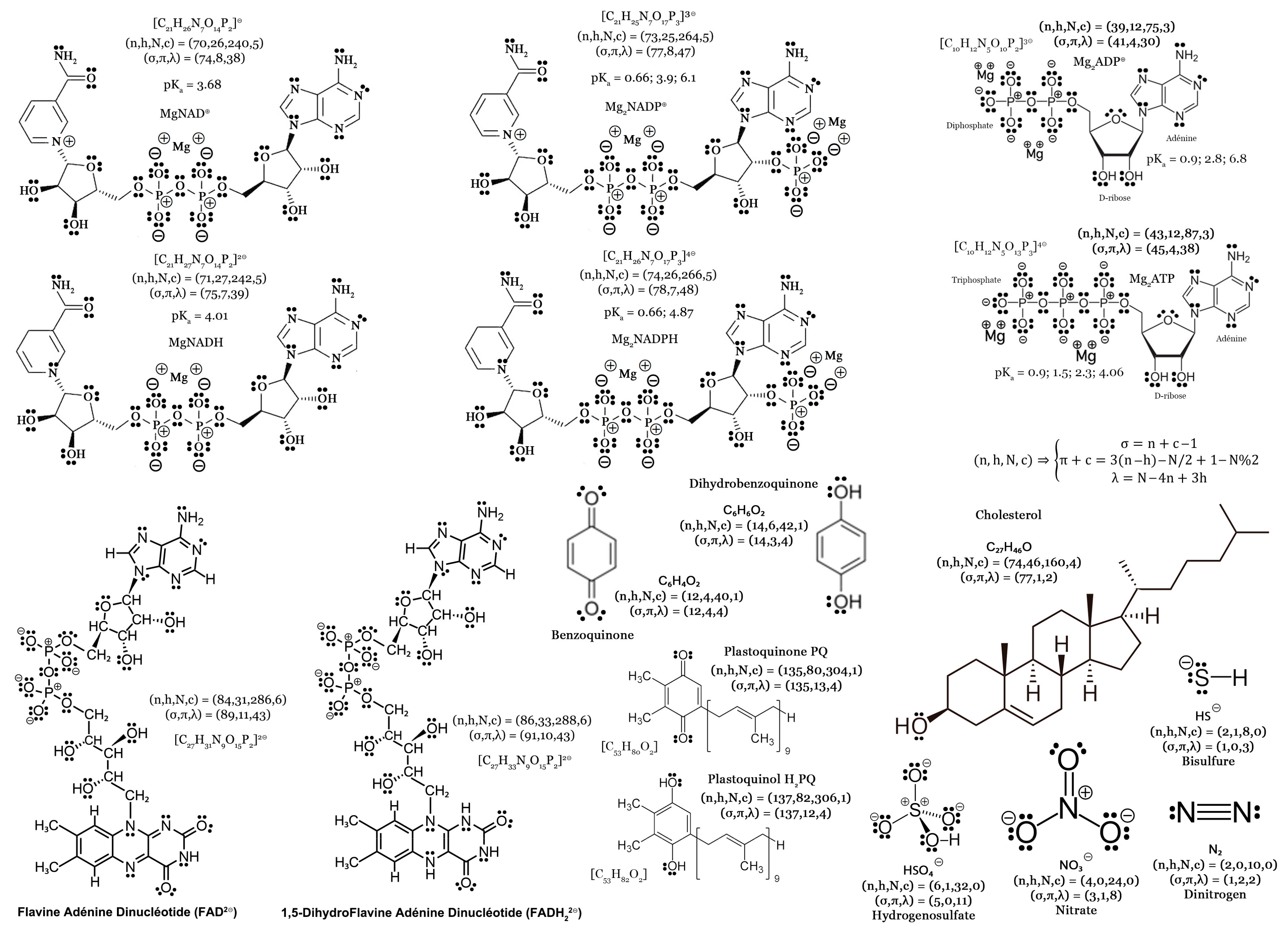
References
- Henry, M. Thermodynamics of life. Substantia 2021, 5, 43–71. [Google Scholar] [CrossRef]
- Henry, M.; Schwartz, L. Entropy export as a driving force of evolution. Substantia 2019, 3 (Suppl. S3), 29–56. [Google Scholar]
- Ginzburg, A.S.; Vinogradova, A.A.; Fedorova, E.I.; Nikitich, E.V.; Karpov, A.V. Content of Oxygen in the Atmosphere over Large Cities and Respiratory Problems. Izv. Atmos. Ocean. Phys. 2014, 50, 782–792. [Google Scholar] [CrossRef]
- What Is the Density of Air Considering Humidity? Available online: https://www.calctool.org/atmospheric-thermodynamics/air-density#what-is-the-density-of-air-considering-humidity (accessed on 31 July 2024).
- Wu, T.; Ost, A.D.; Audinot, J.-N.; Wiesmeier, M.; Wirtz, T.; Häusler, W.; Höschen, C.; Mueller, C.W. Association of fresh low-molecular-weight organic compounds with clay-sized mineral fraction in soils of different organic carbon loading. Geoderma 2022, 409, 115657. [Google Scholar] [CrossRef]
- Henry, M. L’eau Morphogénique: Santé, Information et Champs de Conscience. Les 7 Cadres de Pensées Pour Comprendre; Dangles: Escalquens, France, 2020; 253p, ISBN 978-2-7033-1269-7. [Google Scholar]
- Neidhardt, F.C. Escherichia coli and Salmonella: Cellular and Molecular Biology; ASM Press: Washington, DC, USA, 1996; Volume 1, p. 14. [Google Scholar]
- Ellis, K.J. Reference man and woman more fully characterized. In Biological Trace Element Research; Schrauzer, G.N., Ed.; The Humana Press Inc.: Totowa, NJ, USA, 1990; pp. 385–400. [Google Scholar]
- Tsu, L.; Ching, T.T. Sacred Books of the East; Legge, J., Translator; Oxford University Press: Oxford, UK, 1891; Chapter 42; Volume 39. [Google Scholar]
- Poincaré, H. Chapter XIV, La Fin de la Matière. In La Science et l’Hypothèse; Flammarion: Paris, France, 1914; p. 126. [Google Scholar]
- Destouches-Février, P. Sur l’interprétation physique de la mécanique ondulatoire. Comptes Rendus Acad. Sci. 1946, 222, 1087–1089. [Google Scholar]
- Hornberger, K.; Gerlich, S.; Haslinger, P.; Nimrichter, S.; Arndt, M. Colloquium: Quantum interference of clusters and molecules. Rev. Mod. Phys. 2012, 84, 157–173. [Google Scholar] [CrossRef]
- Tonomura, A.; Nori, F. Disturbance without the force. Nature 2008, 452, 298–299. [Google Scholar] [CrossRef] [PubMed]
- Einstein, A. Äther und Relativitätstheorie; Julius Springer: Berlin, Germany, 1920; p. 15. [Google Scholar]
- Gerbaulet, J.P.; Henry, M. The ‘Consciousness-Brain’ relationship. Substantia 2019, 3, 113–118. [Google Scholar]
- Brisson, L. Le Même et l’Autre dans la Structure Ontologique du Timée de Platon; Collection International Plato Studies; Volume 2, Saint Augustin; Academia Verlag: Berlin, Germany, 1994; p. 222. [Google Scholar]
- Boole, G. An Investigation of the Laws of Thought on Which Are Founded the Mathematical Theories of Logic and Probabilities; Walton and Maberly: London, UK, 1854. [Google Scholar]
- Heyting, A. Die formalen Regeln der intuitionistischen Logik. 3 parts. In Sitzungsberichte der Preußischen Akademie der Wissenschaften; Phys.-Math. Klasse; Deütsche Akademie der Wissenschaften zu Berlin: Berlin, Germany, 1930; pp. 42–56, 57–71, 158–169. [Google Scholar]
- Johansson, I. Der Minimalkalkül, ein reduzierter intuitionistischer Formalismus. Compos. Math. 1937, 4, 119–136. [Google Scholar]
- Watzlawick, P.; Beavin-Bavelas, J.; Jackson, D.A. Pragmatics of Human Communication; W. W. Norton & Company: New York, NY, USA, 1967. [Google Scholar]
- Bateson, G. Steps to an Ecology of Mind; Jason Aronson Inc.: London, UK, 1972; p. 276, 321, 460. [Google Scholar]
- Shannon, C.E. A mathematical theory of communication. Bell Syst. Tech. J. 1948, 27, 379–423. [Google Scholar] [CrossRef]
- Lloyd, S.; Pagels, H. Complexity as Thermodynamic Depth. Ann. Phys. 1988, 188, 186–213. [Google Scholar] [CrossRef]
- Nørretranders, T. The User Illusion; Viking: New York, NY, USA, 1991. [Google Scholar]
- Wiener, N. Cybernetics or Control and Communication in the Animal and the Machine; John Wiley & Sons: New York, NY, USA, 1948. [Google Scholar]
- Jaynes, E.T. Gibbs vs Boltzmann Entropies. Am. J. Phys. 1965, 33, 391–398. [Google Scholar] [CrossRef]
- Prigogine, I. Time, Structure and Fluctuations. Nobel Lecture, 8 December 1977. Available online: https://www.nobelprize.org/uploads/2018/06/prigogine-lecture.pdf (accessed on 31 July 2024).
- Wheeler, J.A.; Ford, K. Geons, Black Holes and Quantum Foam. A Life in Physics; W.W. Norton & Co.: New York, NY, USA, 1998; pp. 63–64. [Google Scholar]
- Henry, M. Consciousness, Information, Electromagnetism and Water. Substantia 2020, 4, 23–36. [Google Scholar]
- Montagnier, L.; Aïssa, J.; Lavallee, C.; Mbamy, M.; Varon, M.J.; Chenal, H. Electromagnetic detection of HIV DNA in the blood of AIDS patients treated by antiretroviral therapy. Interdiscip. Sci. Comput. Life Sci. 2009, 1, 245–253. [Google Scholar] [CrossRef]
- Montagnier, L.; Aissa, J.; Del Giudice, E.; Lavallee, C.; Tedeschi, A.; Vitiello, G. DNA waves and water. J. Phys. Conf. Ser. 2011, 306, 012007. [Google Scholar] [CrossRef]
- Montagnier, L.; Del Giudice, E.; Aïssa, J.; Lavallee, C.; Motschwiller, S.; Capolupo, A.; Polcari, A.; Romano, P.; Tedeschi, A.; Vitiello, G. Transduction of DNA information through water and electromagnetic waves. Electromagn. Biol. Med. 2015, 34, 106–112. [Google Scholar] [CrossRef]
- Montagnier, L.; Aïssa, J.; Capolupo, A.; Craddock, T.J.A.; Kurian, P.; Lavallée, C.; Polcari, A.; Romano, P.; Tedeschi, A.; Vitiello, G. Water bridging dynamics of polymerase chain reaction in the gauge theory paradigm of quantum fields. Water 2017, 9, 339. [Google Scholar] [CrossRef]
- Tang, B.Q.; Li, T.; Bai, X.; Zhao, M.; Wang, B.; Rein, G.; Yang, Y.; Gao, P.; Zhang, X.; Zhao, Y.; et al. Rate limiting factors for DNA transduction induced by weak electromagnetic field. Electromagn. Biol. Med. 2018, 38, 55–65. [Google Scholar] [CrossRef]
- Del Giudice, E.; Preparata, G.; Vitiello, G. Water as a free electric dipole laser. Phys. Rev. Lett. 1998, 61, 1085–1088. [Google Scholar] [CrossRef]
- Arani, R.; Bono, I.; Del Giudice, E.; Preparata, G. QED coherence and the thermodynamics of water. Int. J. Mod. Phys. B 1995, 9, 1813–1842. [Google Scholar] [CrossRef]
- Bono, I.; Del Giudice, E.; Gamberale, L.; Henry, M. Emergence of the Coherent Structure of Liquid Water. Water 2012, 4, 510–532. [Google Scholar] [CrossRef]
- Sen, S.; Gupta, K.S.; Coey, J.M.D. Mesoscopic structure formation in condensed matter due to vacuum fluctuations. Phys. Rev. B 2015, 92, 155115. [Google Scholar] [CrossRef]
- Casimir, H.B.G. On the attraction between two perfectly conducting planes. Kon. Ned. Akad. Wetensch. Proc. 1948, 51, 793–795. [Google Scholar]
- Wilson, C.; Johansson, G.; Pourkabirian, A.; Simoen, M.; Johansson, J.R.; Duty, T.; Nori, F.; Delsing, P. Observation of the dynamical Casimir effect in a superconducting circuit. Nature 2011, 479, 376–379. [Google Scholar] [CrossRef]
- Henry, M. Aqua Incognita: Why Ice Floats on Water and Galileo 400 Years on; Nostro, P.L., Ninham, B.W., Eds.; Connor Court Publishing: Ballarat, Australia, 2014; Chapter IX; pp. 197–239. [Google Scholar]
- Gürtler, P.; Saile, V.; Koch, E.E. Rydberg series in the absorption spectra of H2O and D2O in the vacuum ultraviolet. Chem. Phys. Lett. 1977, 51, 386–391. [Google Scholar] [CrossRef]
- Geesink, H.J.; Jerman, I.; Meijer, D.K. The Cradle of Life via its Coherent Quantum Frequencies. Water 2020, 11, 76–108. [Google Scholar]
- Bianconi, E.; Piovesan, A.; Facchin, F.; Beraudi, A.; Casadei, R.; Frabetti, F.; Vitale, L.; Pelleri, M.C.; Tassani, S.; Piva, F.; et al. An estimation of the number of cells in the human body. Ann. Hum. Biol. 2013, 40, 463–471. [Google Scholar] [CrossRef]
- Pollack, G.H. The Fourth Phase of Water: Beyond Solid, Liquid, and Vapor; Ebner and Sons Publishers: Seattle, WA, USA, 2013. [Google Scholar]
- Ellis, K.J. Human body composition: In vivo methods. Physiol. Rev. 2000, 80, 649–680. [Google Scholar] [CrossRef] [PubMed]
- Benias, P.C.; Wells, R.G.; Sackey-Aboagye, B.; Klavan, H.; Reidy, J.; Buonocore, D.; Miranda, M.; Kornacki, S.; Wayne, M.; Carr-Locke, D.L.; et al. Structure and Distribution of an Unrecognized Interstitium in Human Tissues. Sci. Rep. 2018, 8, 4947. [Google Scholar] [CrossRef]
- Sender, R.; Fuchs, S.; Milo, R. Revised Estimates for the Number of Human and Bacteria Cells in the Body. PLoS Biol. 2016, 14, e1002533. [Google Scholar] [CrossRef]
- Whitman, W.B.; Coleman, D.C.; Wiebe, W.J. Prokaryotes: The unseen majority. Proc. Natl. Acad. Sci. USA 1998, 95, 6578–6583. [Google Scholar] [CrossRef] [PubMed]
- Comptage Instantané. Available online: https://www.worldometers.info/ (accessed on 1 July 2024).
- Sen, S. Measuring Consciousness. J. Conscious. Stud. 2018, 25, 228–251. [Google Scholar]
- Burgin, M.; Feistel, R. Structural and Symbolic Information in the Context of the General Theory of Information. Information 2017, 8, 139. [Google Scholar] [CrossRef]
- Leiper, J.B.; Carnie, A.; Maughan, R.J. Water turnover rates in sedentary and exercising middle aged men. Br. J. Sports Med. 1996, 30, 24–26. [Google Scholar] [CrossRef] [PubMed]
- Amount of Data Created Daily. Available online: https://explodingtopics.com/blog/data-generated-per-day (accessed on 1 July 2024).
- Sherwood, L. Human Physiology: From Cells to Systems, 3rd ed.; Wadsworth Publishing Company: San Francisco, CA, USA, 1997; Table 10.1; p. 311. [Google Scholar]
- Hager, A.; Kaemmerer, H.; Rapp-Bernhardt, U.; Blücher, S.; Rapp, K.; Bernhardt, T.; Galanski, M.; Hess, J. Diameters of the thoracic aorta throughout life as measured with helical computed tomography. J. Thorac. Cardiovasc. Surg. 2002, 123, 1060–1066. [Google Scholar] [CrossRef]
- Haugen, B.O.; Berg, S.; Kjell, M.B.; Torp, H.; Stig, A.S.; Terje, S.; Stei, O.S. Blood flow velocity profiles in the aortic annulus: A 3-dimensional freehand color flow Doppler imaging study. J. Am. Soc. Echocardiogr. 2002, 15, 328–333. [Google Scholar] [CrossRef]
- Nakagaki, T.; Yamada, H.; Toth, A. Maze-solving by an amoeboid organism. Nature 2000, 28, 407. [Google Scholar] [CrossRef]
- Saigusa, T.; Tero, A.; Nakagaki, T.; Kuramoto, Y. Amoebae Anticipate Periodic Events. Phys. Rev. Lett. 2008, 100, 018101. [Google Scholar] [CrossRef]
- Mathai, J.C.; Tristam-Nagle, S.; Nagle, J.F.; Zeidel, M.L. Structural determinants of water permeability through the lipid membrane. J. Gen. Physiol. 2008, 131, 69–76. [Google Scholar] [CrossRef] [PubMed]
- Freud, S. Das Ich und das Es; Internationaler Psychoanalytischer Verlag: Leipzig, Germany, 1923. [Google Scholar]
- Jung, C.G. The Collected Works of C. G. Jung, Vol. 7: Two Essays on Analytical Psychology; Princeton University Press: Princeton, NJ, USA, 1966; pp. 269–273. [Google Scholar]
- Chalmers, D.J. The Meta-Problem of Consciousness. J. Conscious. Stud. 2018, 25, 6–61. [Google Scholar]
- Dennett, D.C. Facing up to the hard question of consciousness. Phil. Trans. R. Soc. B 2018, 373, 20170342. [Google Scholar] [CrossRef] [PubMed]
- Hameroff, S.; Penrose, R. Conscious Events as Orchestrated Space-Time Selections. NeuroQuantology 2003, 1, 10–35. [Google Scholar] [CrossRef]
- Einstein, A. An Interview with Michael Amrine. The New York Times Magazine, 23 June 1946; 7, 42–44. [Google Scholar]
- Williams, R.J.P. A system’s view of the evolution of life. J. R. Soc. Interface 2007, 4, 1049–1070. [Google Scholar] [CrossRef] [PubMed]
- Israelachvili, J. The science and applications of emulsions—An overview. Colloids Surf. 1994, 91, 1–8. [Google Scholar] [CrossRef]
- Guillot, S.; Hattori, K. Serpentinites: Essential Roles in Geodynamics, Arc Volcanism, Sustainable Development, and the Origin of Life. Elements 2013, 9, 95–98. [Google Scholar] [CrossRef]
- Cavalier-Smith, T. Cell evolution and Earth history: Stasis and revolution. Phil. Trans. R. Soc. B 2006, 361, 969–1006. [Google Scholar] [CrossRef]
- Joyce, G.F. The antiquity of RNA-based evolution. Nature 2002, 418, 214–221. [Google Scholar] [CrossRef]
- Orgel, L.E. Prebiotic Chemistry and the Origin of the RNA World. Crit. Rev. Biochem. Mol. Biol. 2004, 39, 99–123. [Google Scholar]
- Gesteland, R.F.; Czech, T.R.; Atkins, J.F. (Eds.) The RNA World; Cold Spring Harbor Laboratory Press: Long Island, NY, USA, 2006. [Google Scholar]
- Dyson, F. Origins of Life, 2nd ed.; Cambridge University Press: Cambridge, UK, 1999. [Google Scholar]
- Baaske, P.; Weinert, F.M.; Duhr, S.; Lemke, K.H.; Russell, M.J.; Braun, D. Extreme accumulation of nucleotides in simulated hydrothermal pore systems. Proc. Natl. Acad. Sci. USA 2007, 104, 9346–9351. [Google Scholar] [CrossRef]
- Powner, M.W.; Gerland, B.; Sutherland, J.D. Synthesis of activated pyrimidine ribonucleotides in prebiotically plausible conditions. Nature 2009, 459, 239–242. [Google Scholar] [CrossRef]
- Watson, J.D.; Crick, F.H.C. Molecular Structure of Nucleic Acids: A Structure for Deoxyribose Nucleic Acid. Nature 1953, 171, 737–738. [Google Scholar] [CrossRef] [PubMed]
- Kruger, K.; Grabowski, P.J.; Zaug, A.J.; Sands, J.; Gottschling, D.E.; Cech, T.R. Self-splicing RNA: Autoexcision and autocyclization of the ribosomal RNA intervening sequence of Tetrahymena. Cell 1982, 31, 147–157. [Google Scholar] [CrossRef] [PubMed]
- Cech, T.R. A model for the RNA-catalyzed replication of RNA. Proc. Natl. Acad. Sci. USA 1986, 83, 4360–4363. [Google Scholar] [CrossRef]
- Guerrier-Takada, C.; Gardiner, K.; Marsh, T.; Pace, N.; Altman, S. The RNA moiety of ribonuclease P is the catalytic subunit of the enzyme. Cell 1983, 35, 849–857. [Google Scholar] [CrossRef] [PubMed]
- Steitz, T.A.; Moore, P.B. RNA, the first macromolecular catalyst: The ribosome is a ribozyme. Trends Biochem. Sci. 2003, 28, 411–418. [Google Scholar] [CrossRef]
- Gilbert, W. The RNA world. Nature 1986, 319, 618. [Google Scholar] [CrossRef]
- Butlerov, A. Formation synthétique d’une substance sucrée. Compt. Rend. Acad. Sci. 1861, 53, 145–147. [Google Scholar]
- Cavalier-Smith, T. Obcells as Proto-Organisms: Membrane Heredity, Lithophosphorylation, and the Origins of the Genetic Code, the First Cells, and Photosynthesis. J. Molec. Evol. 2001, 53, 555–595. [Google Scholar] [CrossRef]
- Williams, R.J.P. Systems biology of evolution, the involvement of metal ions. Biometals 2007, 20, 107–112. [Google Scholar] [CrossRef]
- Pasteur, L. Mémoire sur la relation qui peut exister entre la forme cristalline et la composition chimique, et sur la cause de la polarisation rotatoire. C. R. Acad. Sci. 1848, 26, 535–538. [Google Scholar]
- Pasteur, L. Sur les relations qui peuvent exister entre la forme cristalline, la composition chimique et le sens de la polarisation rotatoire. Ann. Chim. Phys. 1848, 24, 442–459. [Google Scholar]
- Yu, J.; Darú, A.; Deng, M.; Blackmond, D.G. Prebiotic access to enantioenriched amino acids via peptide-mediated transamination reactions. Proc. Natl. Acad. Sci. USA 2024, 121, e2315447121. [Google Scholar] [CrossRef] [PubMed]
- Deng, M.; Yu, J.; Blackmond, D.G. Symmetry breaking and chiral amplification in prebiotic ligation reactions. Nature 2024, 626, 1019–1024. [Google Scholar] [CrossRef] [PubMed]
- Cline, D.B. On the physical origin of the homochirality of life. Eur. Rev. 2005, 13 (Suppl. S2), 49–59. [Google Scholar] [CrossRef]
- Boyd, R.N.; Kajino, T.; Onaka, T. Supernova, Neutrinos and the chirality of amino acids. Int. J. Mol. Sci. 2011, 12, 3432–3444. [Google Scholar] [CrossRef] [PubMed]
- Patel, A.; Malinovska, L.; Saha, S.; Wang, J.; Alberti, S.; Krishnan, Y.; Hyman, A.A. ATP as a biological hydrotrope. Science 2017, 356, 753–756. [Google Scholar] [CrossRef]
- Barber, J. Photosystem II: The Engine of Life. Quart. Revs. Biophys. 2003, 36, 71–89. [Google Scholar] [CrossRef]
- Ferreira, K.N.; Iverson, T.M.; Maghlaoui, K.; Barber, J.; Iwata, S. Architecture of the Photosynthetic Oxygen-Evolving Center. Science 2004, 303, 1831–1838. [Google Scholar] [CrossRef]
- Chitnis, P.R. Photosystem I: Function and physiology. Ann. Rev. Plant Phys. Plant Mol. Biol. 2001, 52, 593–626. [Google Scholar] [CrossRef]
- Jordan, P.; Fromme, P.; Witt, H.T.; Kuklas, O.; Saenger, W.; Krauss, N. Three-dimensional structure of cyanobacterial photosystem I at 2.5 A resolution. Nature 2001, 411, 909–917. [Google Scholar] [CrossRef]
- Frei, R.; Gaucher, C.; Poulton, S.W.; Canfield, D.E. Fluctuations in Precambrian atmospheric oxygenation recorded by chromium isotopes. Nature 2009, 461, 250–253. [Google Scholar] [CrossRef] [PubMed]
- Cavalier-Smith, T. Rooting the tree of life by transition analyses. Biol. Direct 2006, 1, 19. [Google Scholar] [CrossRef] [PubMed]
- Woese, C.R.; Fox, G.E. Phylogenetic structure of the prokaryotic domain: The primary kingdoms. Proc. Natl. Acad. Sci. USA 1977, 74, 5088–5090. [Google Scholar] [CrossRef]
- Blochl, E.; Rachel, R.; Burggraf, S.; Hafenbradl, D.; Jannasch, H.W.; Stetter, K.O. Pyrolobus fumarii, gen. and sp. nov., represents a novel group of archaea, extending the upper temperature limit for life to 113 degrees C. Extremophiles 1997, 1, 14–21. [Google Scholar] [PubMed]
- Kashefi, K.; Lovley, D.R. Extending the upper temperature limit for life. Science 2003, 301, 934. [Google Scholar] [CrossRef]
- Margarita, L. Recent developments in the thermophilic microbiology of deep-sea hydrothermal vents. Extremophiles 2006, 10, 85–96. [Google Scholar]
- Huber, H.; Hohn, M.J.; Rachel, R.; Fuchs, T.; Wimmer, V.C.; Stetter, K.O. A new phylum of Archaea represented by a nanosized hyper-thermophilic symbiont. Nature 2002, 417, 63–67. [Google Scholar] [CrossRef]
- Wolf, S. The pharmacology of placebos. Pharmacol. Rev. 1959, 11, 689–704. [Google Scholar] [CrossRef]
- Shapiro, A.K.; Shapiro, E. The placebo: Is it much ado about nothing. In The Placebo Effect: An Interdisciplinary Exploration; Harrington, A., Ed.; Harvard University Press: Cambridge, MA, USA, 1997; pp. 2–36. [Google Scholar]
- Lemoine, P. Le Mystère du Placebo; Odile Jacob: Paris, France, 1996; 238p. [Google Scholar]
- Henry, M.; Bridoux, S. Symmetry, Music and Water. J. Hum. Soc. Sci. 2024, 7, 1–25. [Google Scholar]
- Newton, I. Opticks: Or, A Treatise of the Reflexions, Refractions, Inflexions and Colours of Light; Proposition VI, Problem II; Sam. Smith, and Benj. Walford: London, UK, 1704. [Google Scholar]
- Ferrie, C. Quantum Bullshit. How to Ruin Your Life With Advice From Quantum Physics; Sourcebooks: Naperville, IL, USA, 2023. [Google Scholar]
- Aslangul, C. Théorie quantique et médecine: Le point de vue d’un physicien. Hegel 2016, 2, 130–139. [Google Scholar]
- Sternheimer, J. Musique des particules élémentaires. C. R. Acad. Sci. Paris Ser. II 1983, 297, 829–834. [Google Scholar]
- Orhan, I.Y.; Gulbahar, B.A. Stimulation of Protein Expression through the Harmonic Resonance of Frequency-Specific Music. Clin. Investig. Med. 2016, 39, S34–S38. [Google Scholar] [CrossRef]
- Prévost, V.; David, K.; Ferrandiz, P.; Gallet, O.; Hindié, M. Diffusions of Sound Frequencies Designed to Target Dehydrins Induce Hydric Stress Tolerance in Pisum Sativum Seedings. Heliyon 2020, 6, e04991. [Google Scholar] [CrossRef] [PubMed]
- Di Carlo, N.S. Les divas et le diapason. Médecine Arts 1997, 21, 10–13. [Google Scholar]
- Raoult, D. Lancet gate: A matter of fact or a matter of concern. New Microbes New Infect. 2020, 38, 100758. [Google Scholar] [CrossRef]
- Kutzelnigg, W. Chemical Bonding in Higher Main Group Elements. Angew. Chem. Int. Ed. Eng. 1984, 23, 272–295. [Google Scholar] [CrossRef]

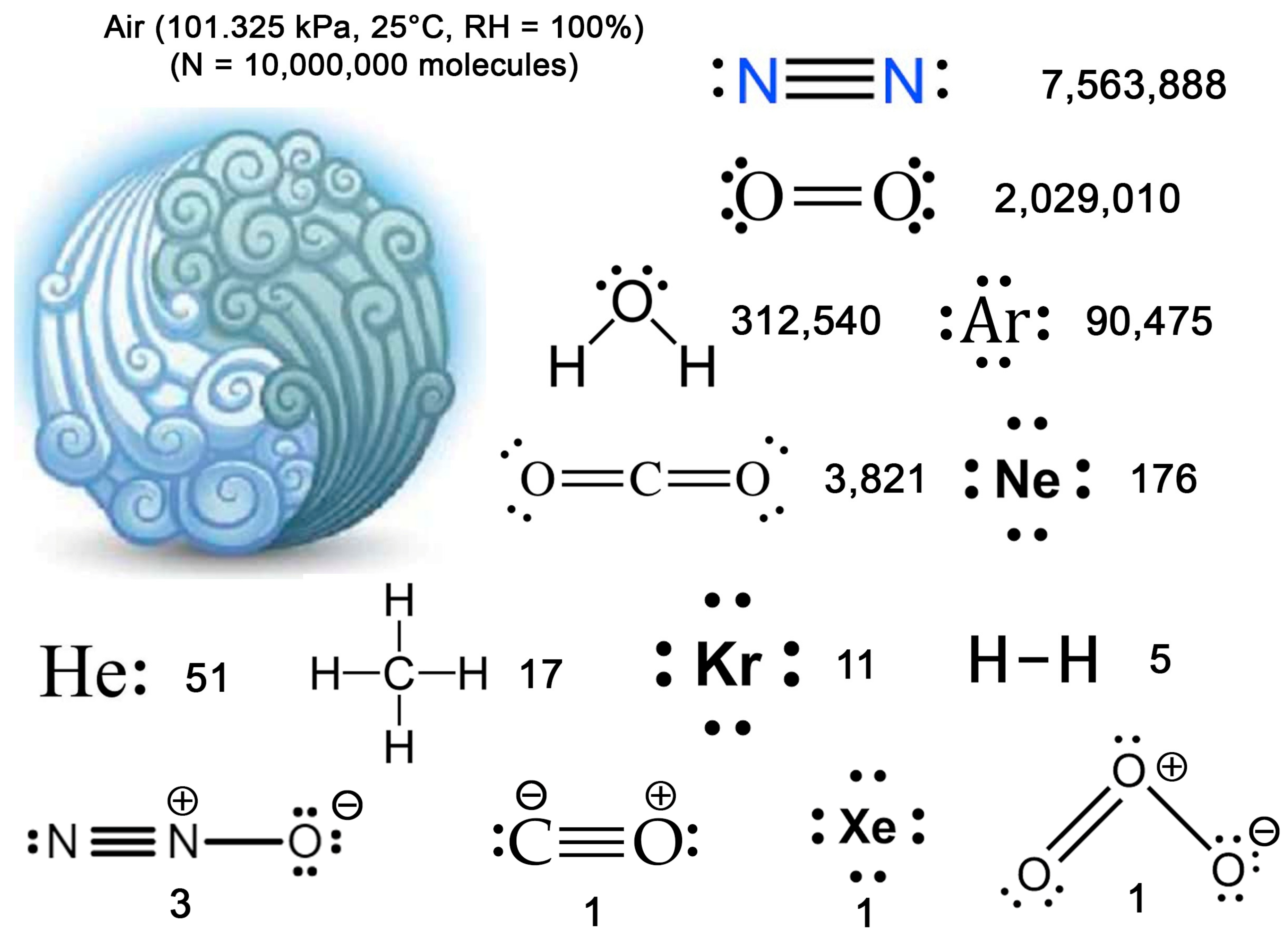
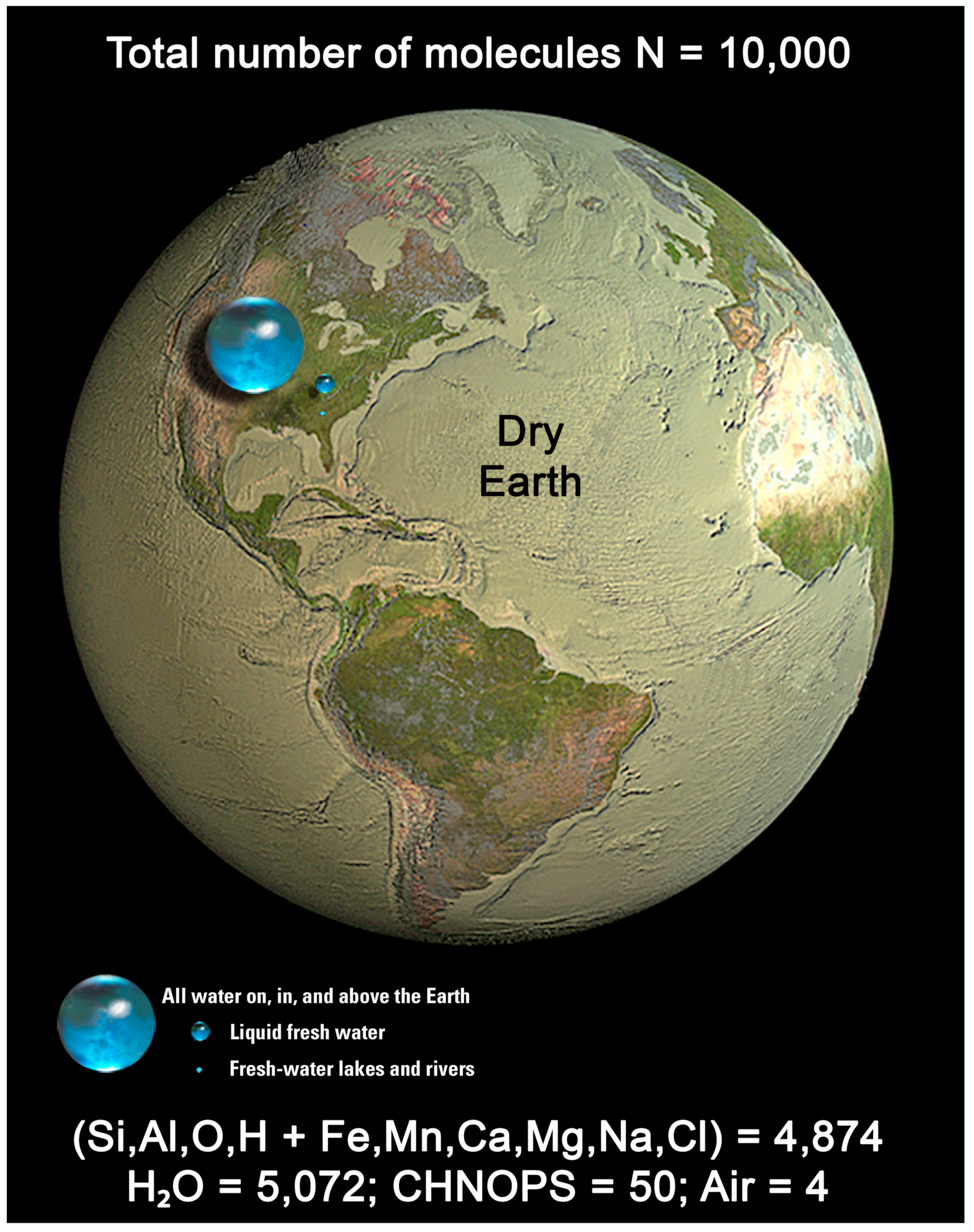

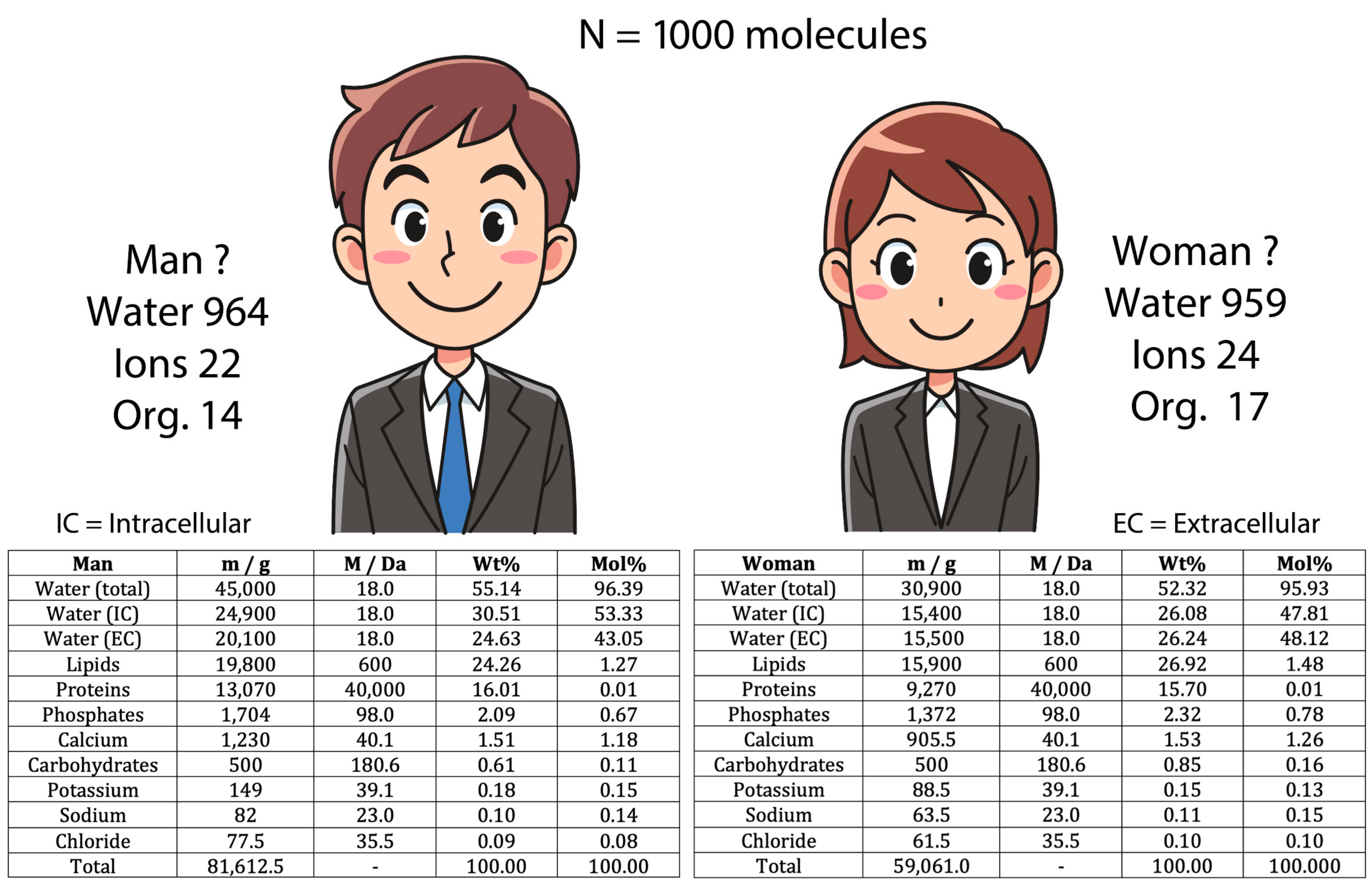
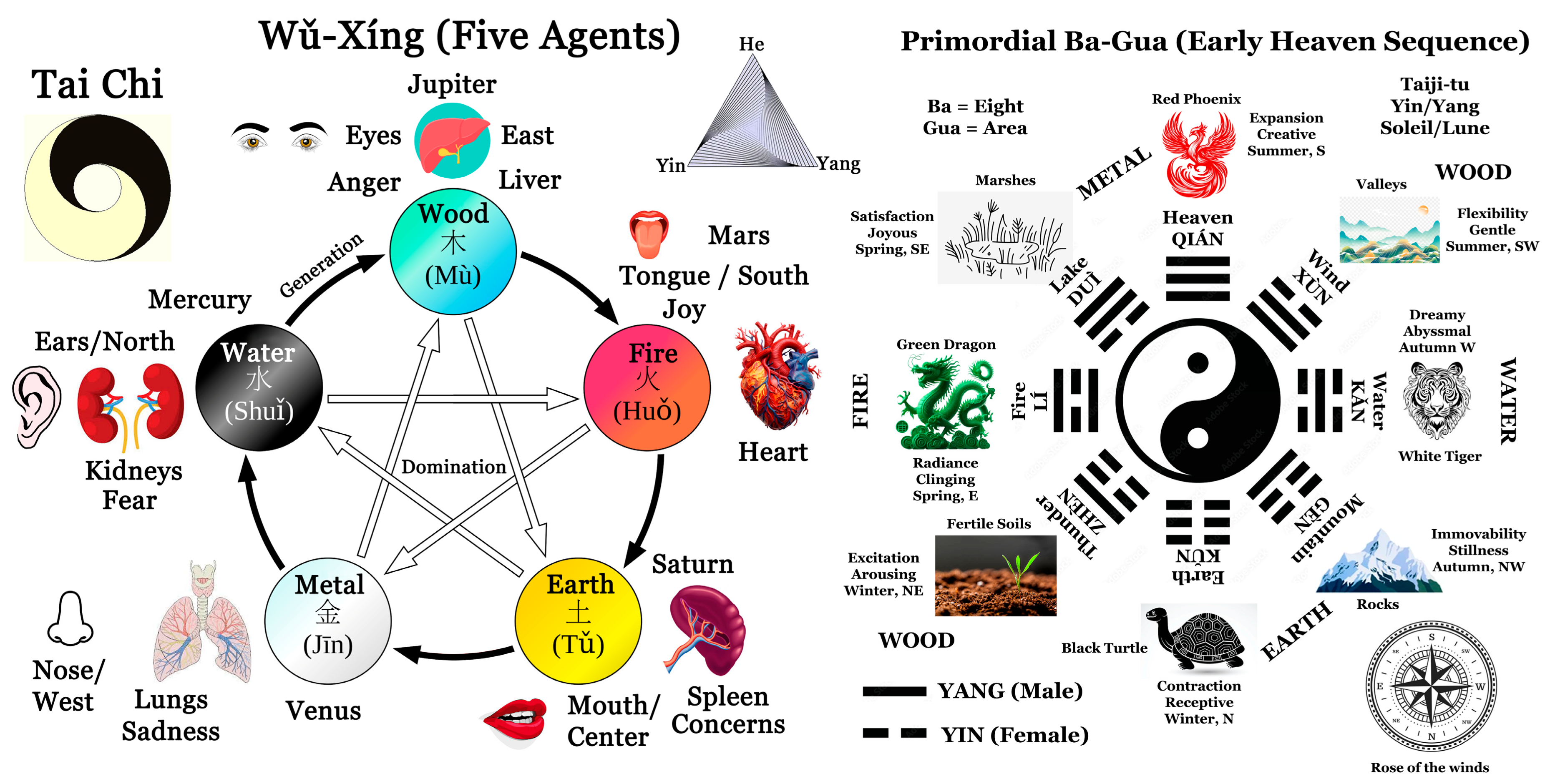

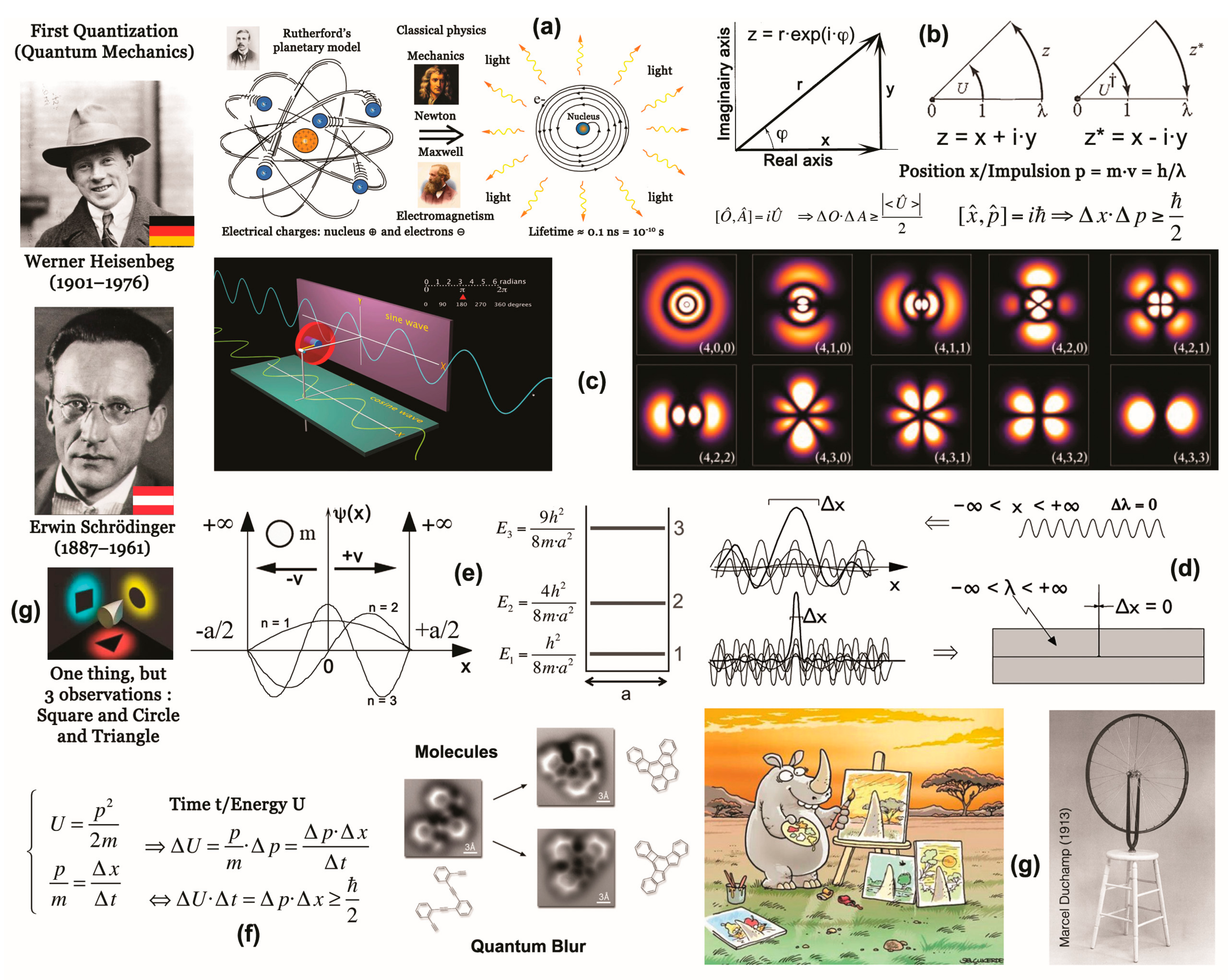
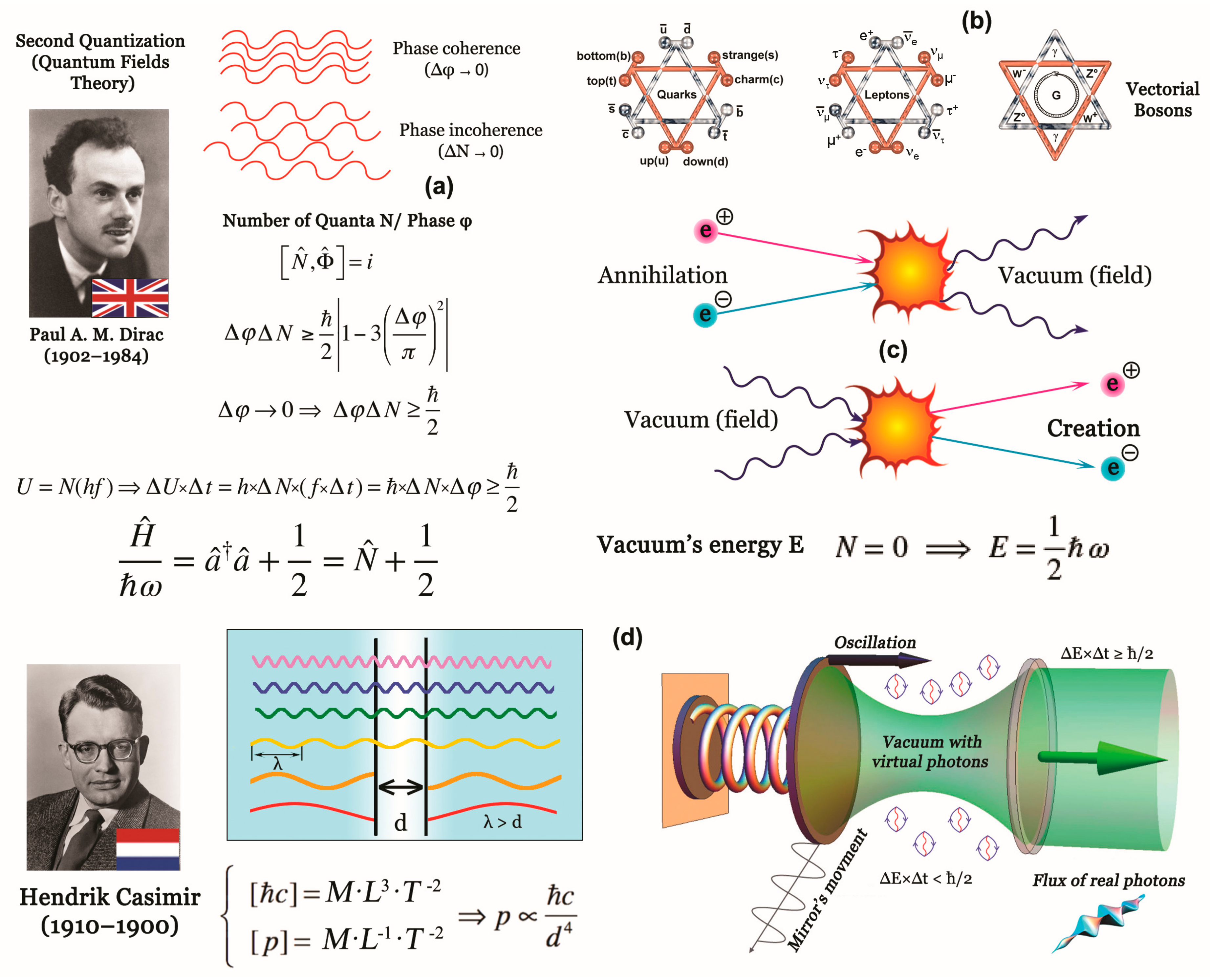

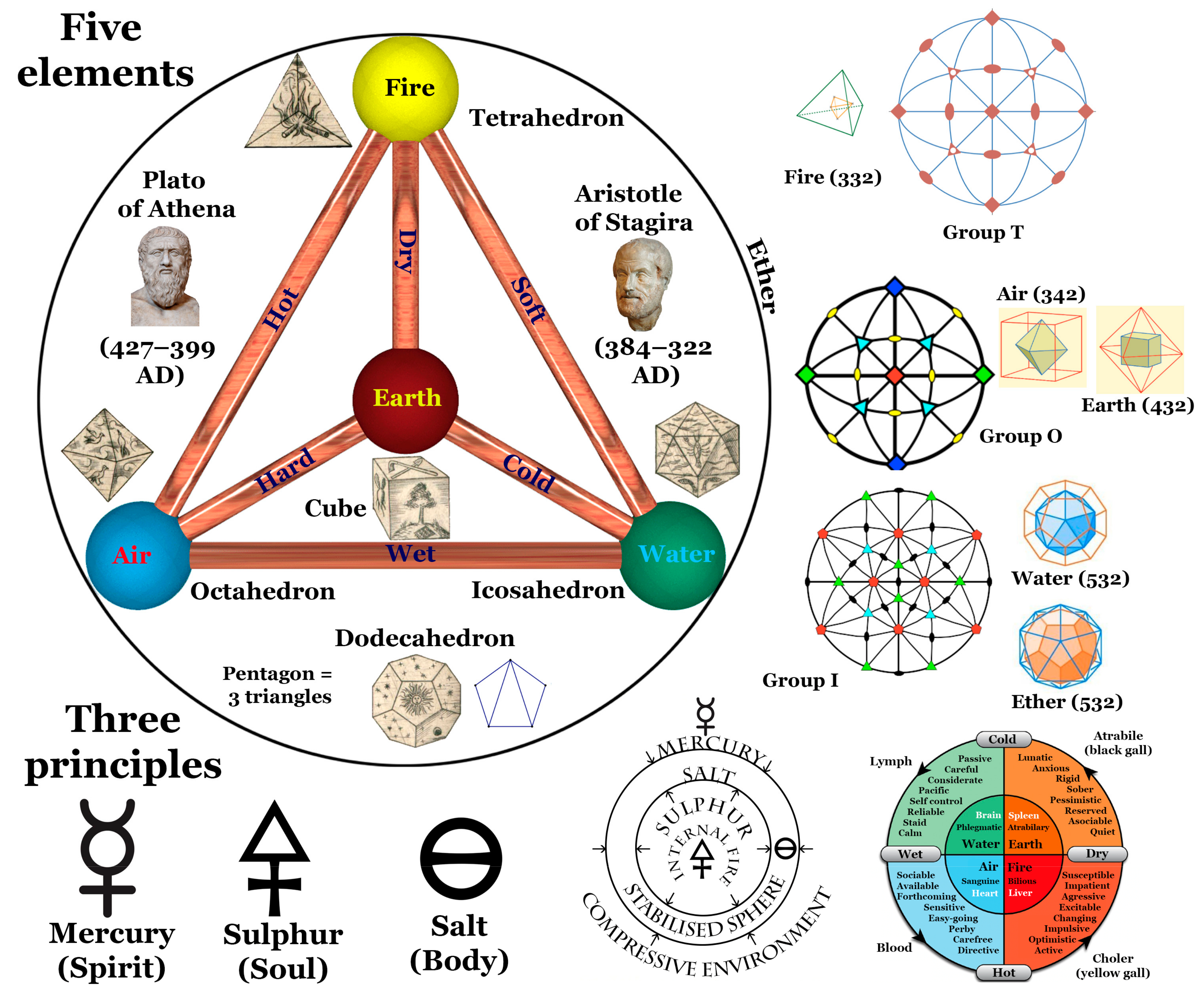


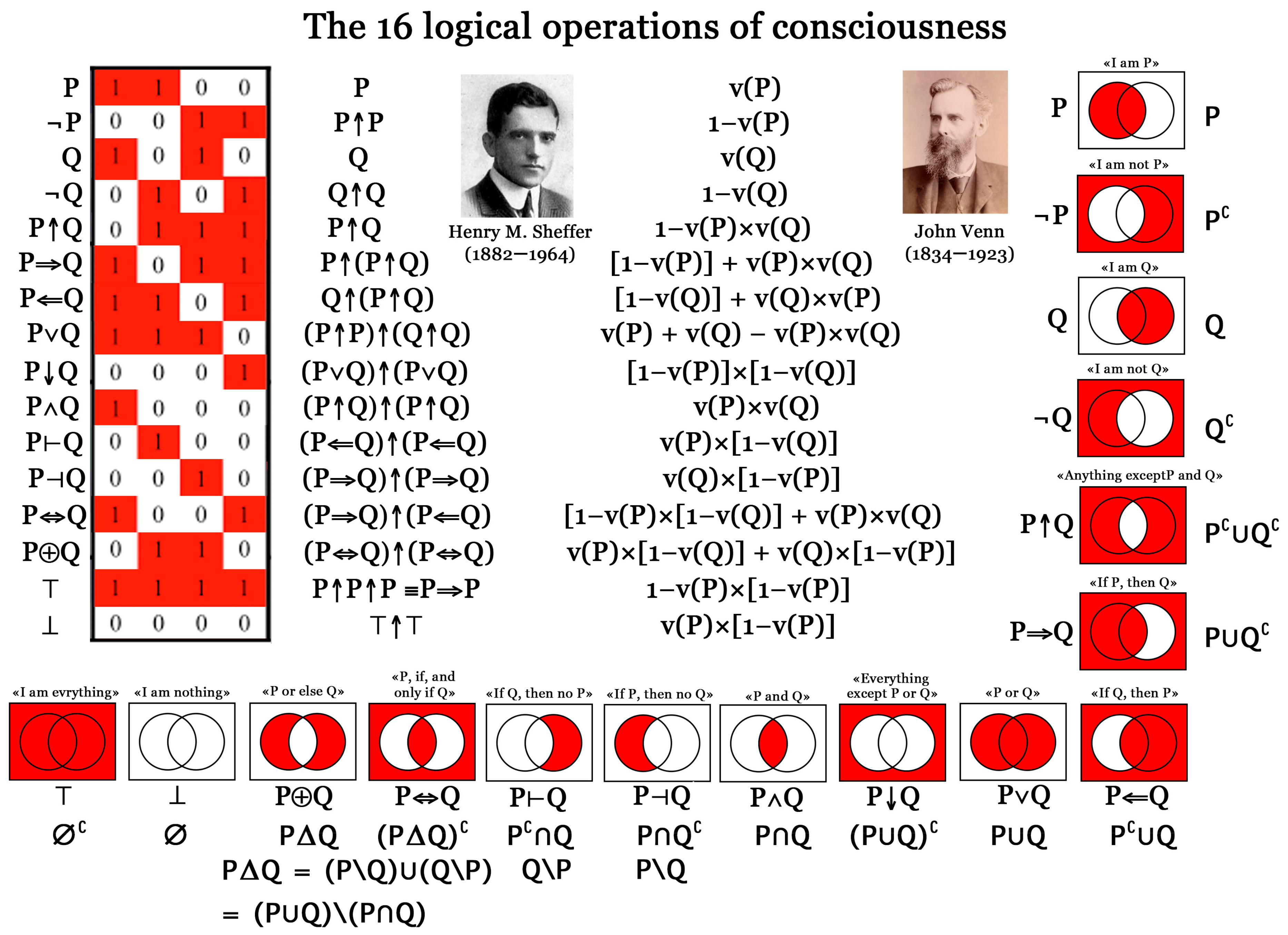
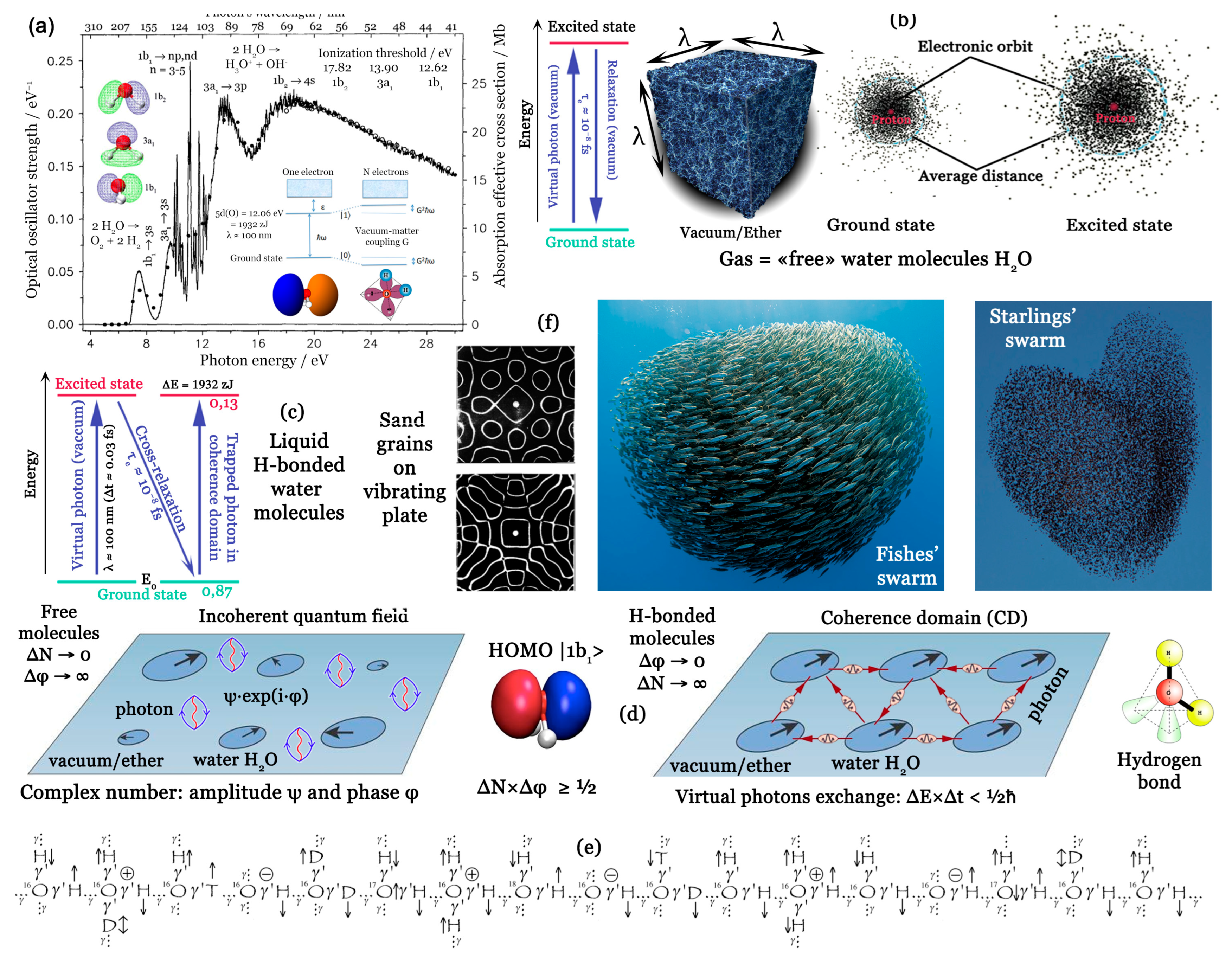

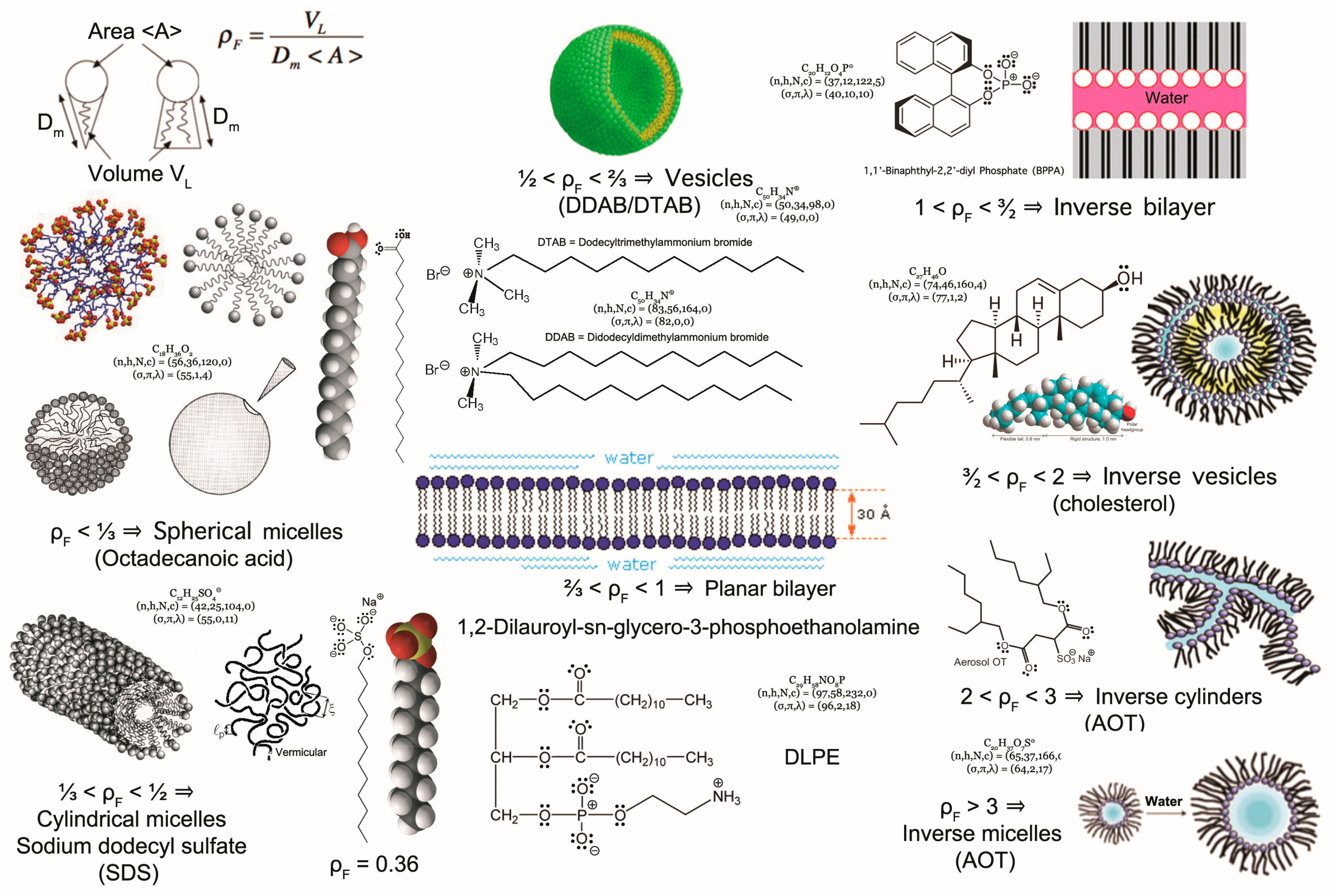
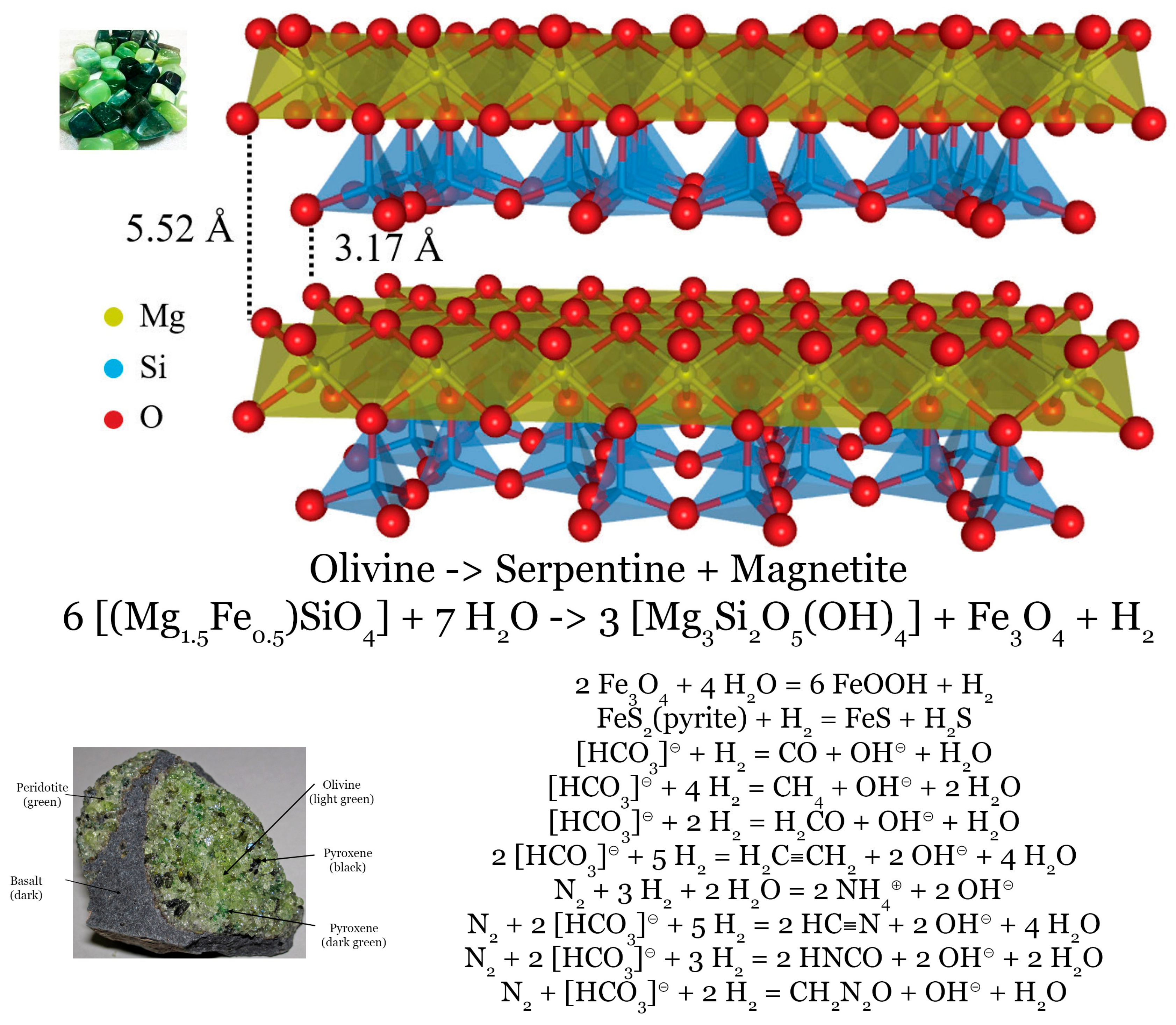

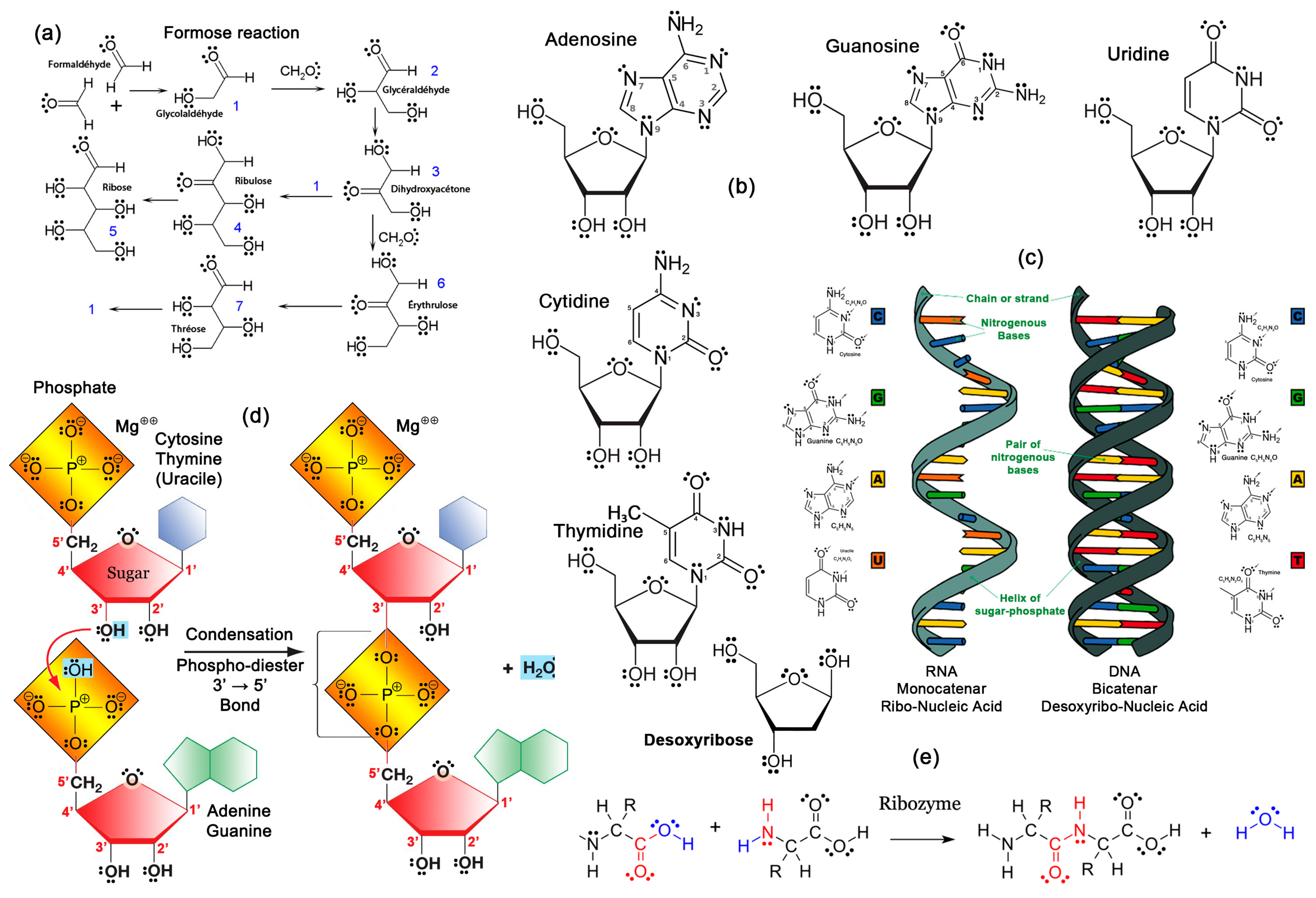

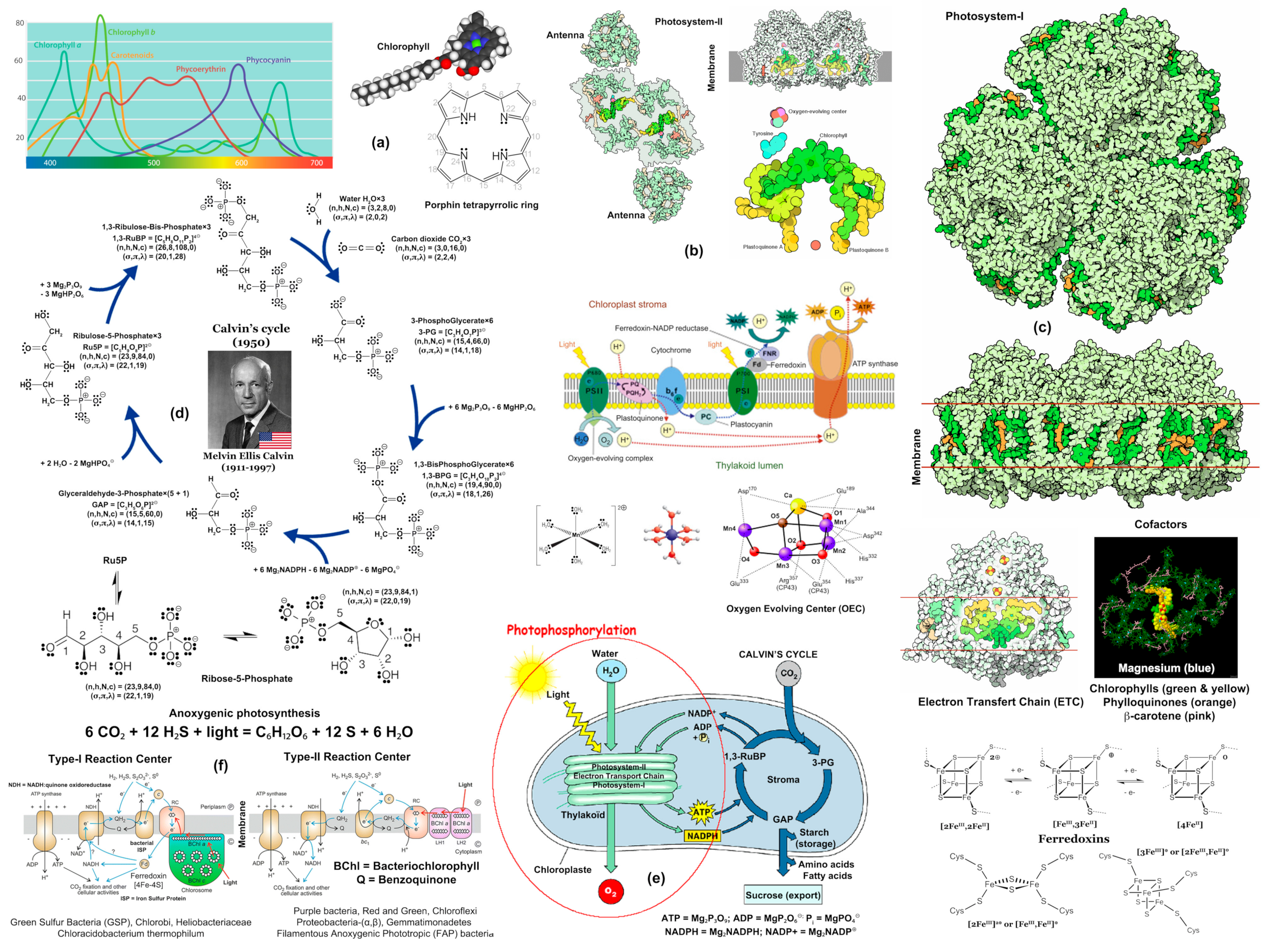



Disclaimer/Publisher’s Note: The statements, opinions and data contained in all publications are solely those of the individual author(s) and contributor(s) and not of MDPI and/or the editor(s). MDPI and/or the editor(s) disclaim responsibility for any injury to people or property resulting from any ideas, methods, instructions or products referred to in the content. |
© 2024 by the author. Licensee MDPI, Basel, Switzerland. This article is an open access article distributed under the terms and conditions of the Creative Commons Attribution (CC BY) license (https://creativecommons.org/licenses/by/4.0/).
Share and Cite
Henry, M. Water and the Origin of Life. Water 2024, 16, 2854. https://doi.org/10.3390/w16192854
Henry M. Water and the Origin of Life. Water. 2024; 16(19):2854. https://doi.org/10.3390/w16192854
Chicago/Turabian StyleHenry, Marc. 2024. "Water and the Origin of Life" Water 16, no. 19: 2854. https://doi.org/10.3390/w16192854
APA StyleHenry, M. (2024). Water and the Origin of Life. Water, 16(19), 2854. https://doi.org/10.3390/w16192854





